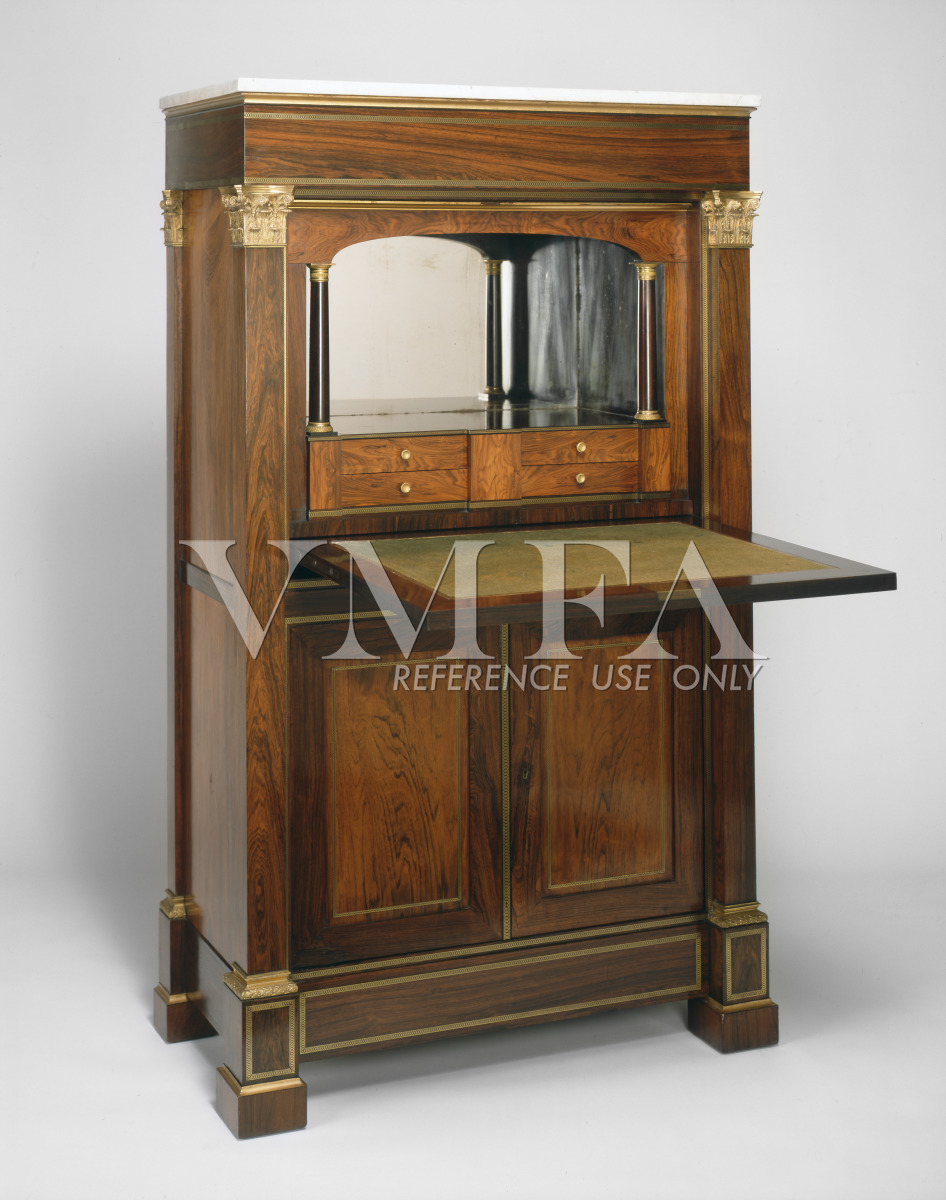
Secrétaire à Abattant (Primary Title)
Fall-Front Secretary (Translation)
Duncan Phyfe, American, 1768 - 1854 (Artist)
This graceful writing desk is one of a handful produced by a yet-to-be-identified New York cabinetmaker. Its classical form, elegant proportions, and fine material details signal the influence of immigrant European cabinetmakers on high-style production in New York and other urban areas. Improved transportation, expanding technologies, and growing political tensions expedited the transfer of talented craftsmen to America and increased the complexity and variety of local production. Following the War of 1812, James Monroe ordered a suite of French furniture to restore the ravaged White House. The collection included a similar fall-front desk on which Monroe drafted the Monroe Doctrine.
Adolph D. and Wilkins C. Williams Fund, by exchange
Image released via Creative Commons CC-BY-NC
Some object records are not complete and do not reflect VMFA's full and current knowledge. VMFA makes routine updates as records are reviewed and enhanced.

